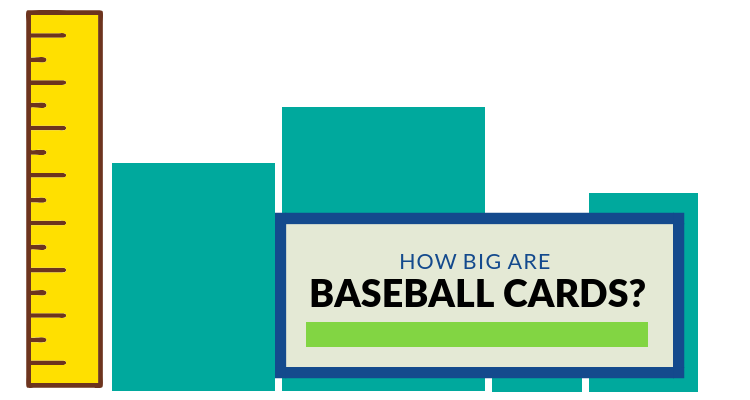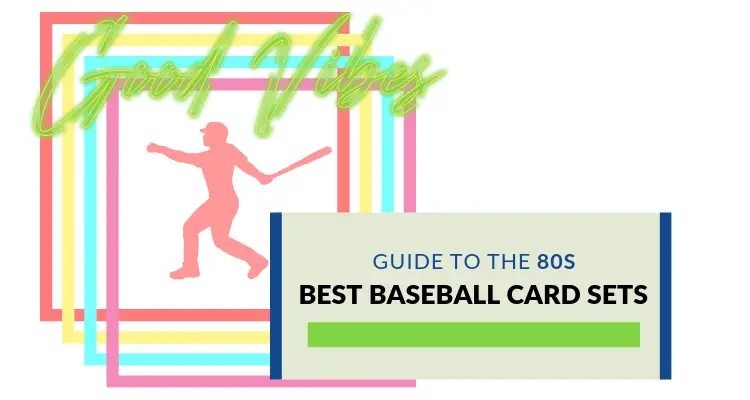Some collect to collect, while others “collect” to make money. To each their own, but for those building their collections over the year, one of the best things about doing so is organizing.
(Actually, maybe you haven’t realized that, and that’s why you’re here!)
It could be somewhat of a nostalgia factor for me—I just remember waking up early on the weekend, pulling out tubs of cards I had just gone through the previous weekend, but this time around pulling them out and stacking with a different angle or goal.
So much handling and the mass storage in those tubs didn’t lead to cards being left in great condition, but I’ve heard people do worse things with their cards when they were kids.
Anyway, when it comes to how to organize your cards, there are two main pieces to consider:
- How to categorize your collection: by player, team, and more
- How to physically organize your collection: binders, boxes, and more.
Below, I’ll touch on both, with a brief mention of the common products you should be using to protect your cards while storing as well.
How to Categorize Your Baseball Card Collection
The first step is to figure out how you want to go about collecting, and specifically, how you’d like to categorize things.
This all starts with your overall collecting goal—some people collect a certain player, others collect a team. In those cases, things are a bit more straightforward.
Here are some of the many different ways people start collecting baseball cards:
- Single-player
- All players of a team
- Only autograph cards
- Only full sets
- Only memorabilia cards
- Hall of Famers
Pretty straightforward, right? Some people even collect unopened boxes and packs, and yearly sets of course.
And then, how about:
- Players who share your last name
- Cards with a specific stadium in the background
- Error cards
- Certain serial-numbered cards
And that’s what makes card collecting great. Some people will chase value, and that’s fine, but others will chase obscurity, others will chase goofiness, and others will chase emotion.
Some might complain that there are too many cards out there, and even though there are only a couple of baseball card brands, there seems to be a new release every week.
But on the other hand, no matter which bucket of collector you fall into, that means more opportunity to chase what you love.
How to Organize Your Collection
Now, once you have a solid idea of what you’re collecting, it becomes a lot easier to get into proper organization.
When it comes to organization, more of the common options include:
1. Use Sorting Trays & Card Organizers
Before getting to the point of storing your cards in an organized manner, many people – myself included – enjoy sorting and just need a way to do so that’s better than making stacks and stacks across your work desk. Stacks that, when they get too tall of careless, start toppling over leading to maximum frustration.
So, these sorting trays are handy, and have a ton of compartments in a compact space to make things much easier.
(In terms of card organizers, dividers which are mentioned below can turn any box into an organization tool.)
2. Utilize Card Binders
A card binder is probably what most who are coming back into the hobby are accustomed to. The typical black or navy album filled with 9-slot plastic sheets is what most of us grew up with, right?
Well, even today, and even for the most advanced collections, binders are a viable organization option. Here are a few pros and cons.
Pros
Easier to admire your cards
Again, what are you collecting for? Some like to just acquire cards and cards, stuff them away, and revisit on a rainy day. Others, though, like to look at their collections a lot more often.
While thumbing through toploaders is doable, and there is a place for displaying magnetic holders on stands, turning binder pages might allow you to take in more of your collection, and gain a greater appreciation for it…especially if you have a theme you’re following; it’s a lot cooler to see everything stacked against each other in a binder, in my opinion.
And instead of binders, I love the look of these folders—less protection, but a much cleaner look:
Binders are shelf-able
Depending on your collecting space, you might not have all of the room in the world. Some are using offices, others have full-blown card caves. Either way, space seems to always be at a premium.
Read More: Is Collecting Cards Worth It?
So, one of the best ways to keep things tidy is to obviously keep cards off the floor, and store “up” by using shelving and stands. Binders can be easily slotted side-by-side, and for easier tracking, utilize the binder’s spine with a card, sticker, or some other way to label for contents.
Could be more affordable
For the most part, you can find decent binders and pages ore affordably than supplies like toploaders and boxes. Plus, one of the best ways to acquire card binders in my opinion is with cards in them!
Meaning, when it comes to where to buy baseball cards, you might find collections on eBay, OfferUp, CraigsList, Facebook Marketplace, and elsewhere for $20-$100. And, the best part is, these collections might feature one or a ton of binders filled with cards. Some binders are in better condition than others, and you probably won’t get everything that ends up looking the same, but still a good option.
Cons
Less protection
Now, many of these pros and cons up and down the list are debatable; I’m merely just pointing out some of the feedback I’ve seen or heard about the hobby.
With binders, you’re obviously dealing with softer sleeving than you would be with top loaders or magnetic cases. So, the softer the sleeve, the less protection. Yes, you do have the binder cover, and unless cards are being handled in extreme conditions, there isn’t any reason to think this isn’t enough protection, but worth pointing out.
Easily damageable
On a related note, if you were to compare how many times a card would be put into and removed from a binder sleeve versus how many times it would be put into a penny sleeve/toploader and stored in a box, you’d have to say there is a higher likelihood of the binder sleeve switch scenario.
(Don’t forget to sleeve common baseball cards when it makes sense to!)
Meaning, as collections evolve, and as sets become more or less complete, cards in binders might need to be moved to different pages. Thus, every time a card is put into and removed from a page sleeve, the greater chance of a corner getting caught, etc.
In terms of how one can go about organizing cards in a binder, many people choose to do so by player, team, or card number. Because I utilize binders for my insert sets, I have them organized by brand (Donruss, etc.), insert set (Diamond Kings), and card number.
3. Utilize Card Boxes
When it comes to storing your cards, there are really two main options—the binder as explained above, and the box, which we will get into below.
And, when I mention card boxes, they come in all different shapes and sizes. While the count and amount that can be held is the main differentiator between them all, there are certain boxes that will or won’t hold specialty holders like toploaders, magnetic cases, uncirculated cards, and graded slabs.
Read More: Best Graded Card Display Cases
For example, the box above is called a “monster box” and holds 3,200 cards. Another popular option is the “shoebox” which has two rows and can better hold toploaders:
For the sake of simplicity, the pros and cons below provide more of general guidance.
Pros
Options
With the card binder, you’re typically going to have one standard size, and pages are almost always going to have nine slots per. With boxes, though, you can choose from a number of different sizes in terms of count and the amount they can hold.
Not to mention that there are speciality boxes made for different types of card holders and more. Meaning, you can more easily adapt boxes to your needs than you could a binder.
Again, it all depends on preference, and there is plenty to be said for the simplicity of a multi-binder setup.
Cons
Construction
Unlike a binder that typically comes with pages put together, a box is going to require a little bit of manual folding. It’s not a lot, but the process can become tedious depending on how many you need.
Pricier
It’s not that the boxes themselves are pricer than something like a card binder (though they might be, depending) but to store cards in boxes, you might need to also invest in additional supples, like dividers, labels, and more.
4. Separate with Card Dividers
As mentioned above, if you’re storing cards in boxes, you might need a way to divide the different sections of the contents. An easy way to go about it is with the dividers shown below (I prefer the tall because they more noticeably stick out of the cards and are thus easier to locate and remove), but to help further, you can add team stickers or labels to the top of the dividers so you can more easily locate a player or team.
5. Apply Labels
Last, once you have all of your cards in your binders or boxes (with dividers) you’ll want to use labels in order to easily find cards when needed. I can’t tell you how many times I needed a certain player or set with no idea where to start, only to be bailed out by my labels.
For this, you can cheat a bit, especially if you’re organizing cards by team. Meaning, instead of opting for custom labels, you can pick up a pack of team stickers from Amazon and then apply them to the top of your card dividers. If you’re using binders, then yes, tabs and pull labels can help tremendously.
How to Catalog Your Cards
The third piece of card collection organization is cataloging, and knowing which cards you have, and which you need.
This is a more pressing need for those who are set or player collectors, but no matter the type of collector, you’re going to want to know what you have in order to make acquiring, trading, and even selling baseball cards on eBay much easier.
Spreadsheets
One of the most basic ways you can go about cataloging your collection is with a spreadsheet. Doing so will allow for easy entry and calculations, and can be adapted to your needs. You don’t have to have advanced skills to make a spreadsheet work, though, cataloging through spreadsheets can certainly be enhanced with color coding and formulas.

Databases
For a more formal approach, there are a few different card databases that already have more or less every card cataloged, and typically complete with set information, and sometimes a picture of the card, etc.
With most of these options, you simply search for the card in your collection, and then click to add, etc.
Trading Card Database
Sports Card Database
Beckett
How to Protect Your Cards
Now, this post isn’t really about which type of card holder is the best and when, but since it’s a related topic and mentioned throughout, I thought it might help some of you who are just getting started.
1. Penny Sleeves
A must-have for most storage scenarios of any card with value. Even if you’re considering putting the card in a top holder, the penny sleeve is a must beforehand.
Plenty of people believe the best way to store cards is to just sleeve cards and place in boxes rather than just putting the raw card into a box without protection.
2. Toploaders
If you need a more rigid holder that provides better protection, a toploader is perfect. (As mentioned, you’ll want to first put the card into a penny sleeve before the toploader.)(Affiliate Link)As stated above, adding a card to a toploader is typically a “final” action, meaning, there aren’t a lot of reasons to add a card and then remove, etc.
3. Magnetic Cases
For higher value cards, a magnetic case provides great protection, and, they simply look nice. They are more expensive, so these cases are definitely reserved for higher-value collection pieces. You might also see these referred to as “one touches” or “mags.”
And that’s all for now! Good luck with your collection, organizing, and storage.



